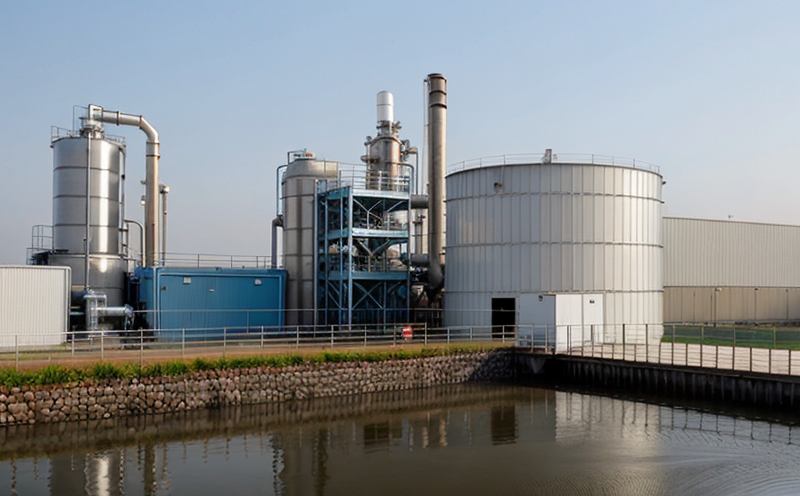DIN 38409 Chemical Oxygen Demand COD Testing Validation Method Development Test
The DIN 38409 method is a widely recognized standard used to validate chemical oxygen demand (COD) testing methods. This stringent procedure ensures the accuracy and reliability of water quality tests, particularly critical in industrial manufacturing and processing facilities where wastewater management plays a key role.
This service involves developing and validating new COD testing methodologies according to DIN 38409 standards. Our team works closely with clients to design tests that align perfectly with their specific industrial processes, ensuring compliance with stringent environmental regulations. We understand the diverse needs of different industries such as chemical processing, pharmaceuticals, food & beverage, and metallurgy, each having unique wastewater characteristics.
The process begins with thorough consultation with our clients to identify their specific requirements and challenges. From there, we proceed to develop a custom testing protocol that adheres to DIN 38409 standards while also accommodating the unique aspects of the industrial water system in question. Our methodology includes rigorous laboratory tests using advanced instrumentation like automated titration systems and UV-Vis spectrophotometers.
The development phase is followed by extensive validation, ensuring not only compliance with DIN 38409 but also achieving accurate and repeatable results. This involves multiple replicates of the test to establish consistency and reliability. The final step is comprehensive reporting, which includes detailed documentation of all testing procedures and results.
By offering this service, we help industrial facilities maintain high standards of water quality while ensuring regulatory compliance. Our approach not only enhances operational efficiency but also supports sustainable practices that are beneficial for both the environment and business performance.
| Applied Standards |
|---|
| DIN 38409:2015-12 - Environmental Protection - Determination of Chemical Oxygen Demand (COD) in Water and Effluents by Potassium Permanganate Method |
Why It Matters
The accuracy and reliability of COD testing are crucial for industrial facilities, especially those involved in water-intensive processes. DIN 38409 ensures that the methods used to measure chemical oxygen demand are precise and consistent across different laboratories and over time.
By adhering to these standards, industrial plants can:
- Ensure compliance with environmental regulations
- Improve water quality control within their facilities
- Reduce the risk of environmental contamination
- Increase operational efficiency by optimizing wastewater treatment processes
These benefits translate into cost savings and enhanced reputation for responsible environmental stewardship. Additionally, validated COD testing methods are essential for meeting international standards and gaining trust from stakeholders.
Applied Standards
| Standard Reference | Description |
|---|---|
| DIN 38409:2015-12 | Environmental Protection - Determination of Chemical Oxygen Demand (COD) in Water and Effluents by Potassium Permanganate Method |
The DIN 38409 method specifies a robust procedure for determining COD levels, which is essential for validating new testing methods. This standard ensures that the chemical reactions involved are accurately measured and reported.
Benefits
- Enhanced Compliance: Ensure full compliance with international environmental standards.
- Increased Accuracy: Develop methods that deliver precise COD measurements.
- Improved Efficiency: Optimize wastewater treatment processes for better operational performance.
- Environmental Protection: Minimizes the risk of water pollution and ecological harm.
- Risk Management: Identify potential issues early in the testing process to avoid costly mistakes.
- Regulatory Trust: Gain credibility with regulatory bodies by adhering to stringent standards.
- Sustainable Operations: Contribute to long-term environmental sustainability through validated methods.
The benefits extend beyond mere compliance; they contribute significantly to the overall efficiency and reliability of industrial water management practices, leading to more sustainable operations.





